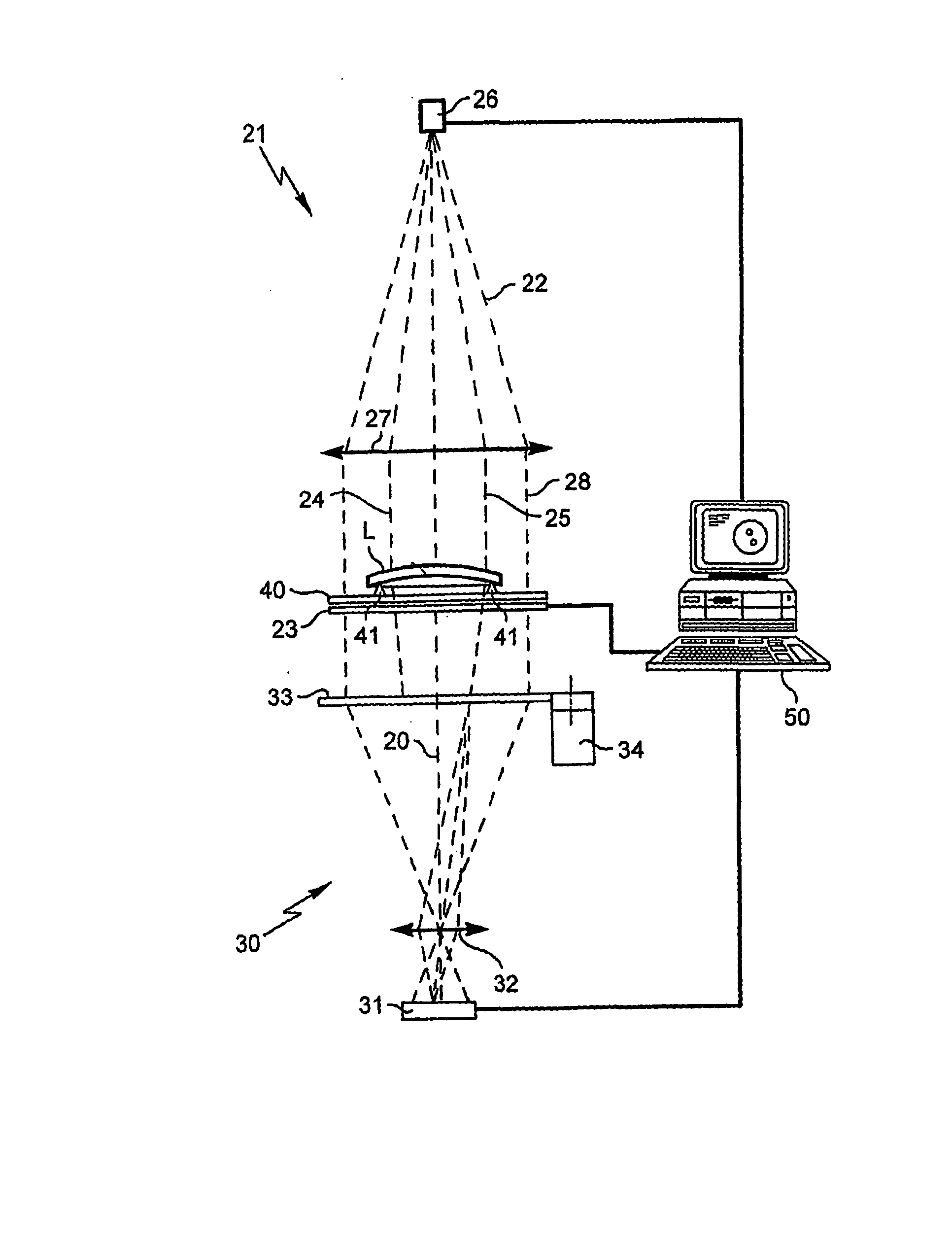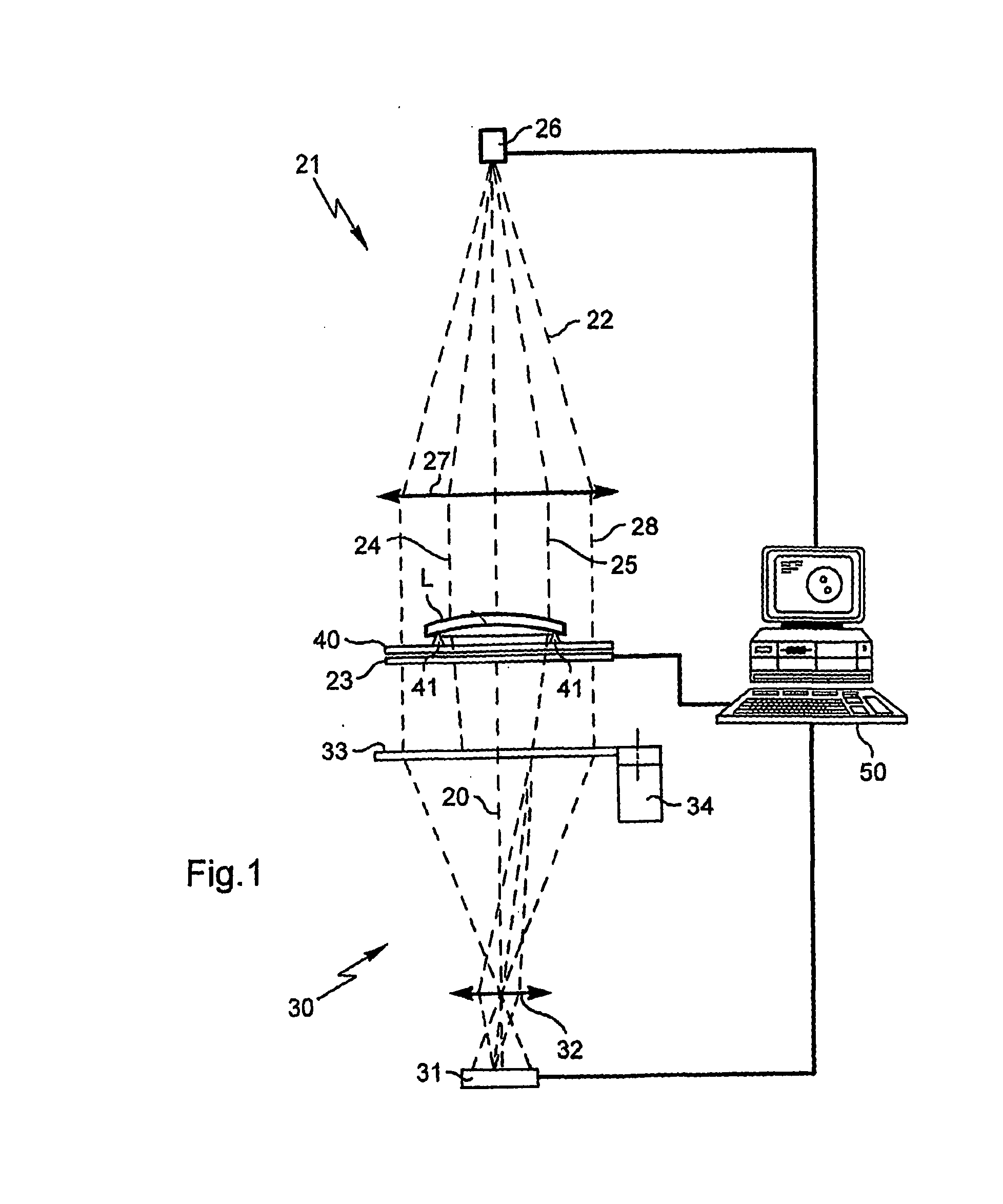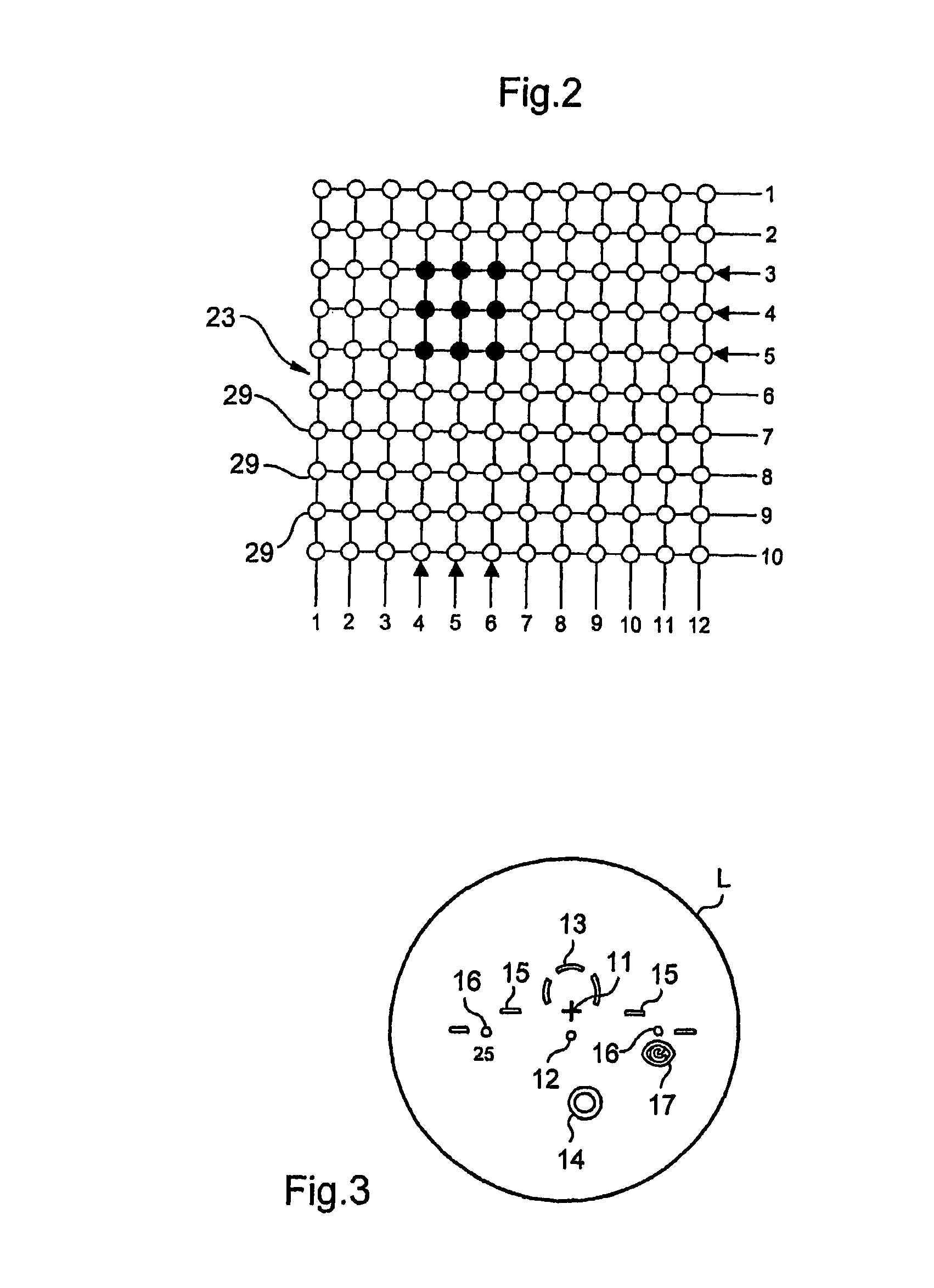Method And Apparatus For Locally Measuring Refractive Characteristics Of A Lens In One Or Several Specific Points Of Said Lens
a technology for local measurement and refractive characteristics, which is applied in the field of measuring optical lenses, can solve the problems of affecting the profitability or quality of the work carried out, the apparatus cannot be delegated, and the prescription of the lens is missing, so as to achieve the effect of reducing the cost of the equipment, saving resources, and avoiding the loss of the lens prescription
- Summary
- Abstract
- Description
- Claims
- Application Information
AI Technical Summary
Benefits of technology
Problems solved by technology
Method used
Image
Examples
Embodiment Construction
[0049] The following description with reference to the accompanying drawings of an embodiment given by way of non-limiting example makes it possible to understand what the invention consists in and how it can be implemented.
[0050] In the accompanying drawings:
[0051]FIG. 1 is an overall diagrammatic view of apparatus of the invention for measuring the refractive characteristics of a lens;
[0052]FIG. 2 is a plan view of the active mask on its own, implemented in the form of an LCD graphics screen;
[0053]FIG. 3 is a plan view of the front face of a progressive correcting lens showing the conventional marking of said lens;
[0054]FIG. 4 is a plan view of the FIG. 3 lens which, after being placed in the measurement apparatus, is superposed on the active mask with a group of light rays pointed at and concentrated around the reference point for far vision being detached by activating corresponding pixels of the LCD mask;
[0055]FIG. 5 is a perspective view in a configuration analogous to t...
PUM
 Login to View More
Login to View More Abstract
Description
Claims
Application Information
 Login to View More
Login to View More - R&D
- Intellectual Property
- Life Sciences
- Materials
- Tech Scout
- Unparalleled Data Quality
- Higher Quality Content
- 60% Fewer Hallucinations
Browse by: Latest US Patents, China's latest patents, Technical Efficacy Thesaurus, Application Domain, Technology Topic, Popular Technical Reports.
© 2025 PatSnap. All rights reserved.Legal|Privacy policy|Modern Slavery Act Transparency Statement|Sitemap|About US| Contact US: help@patsnap.com



